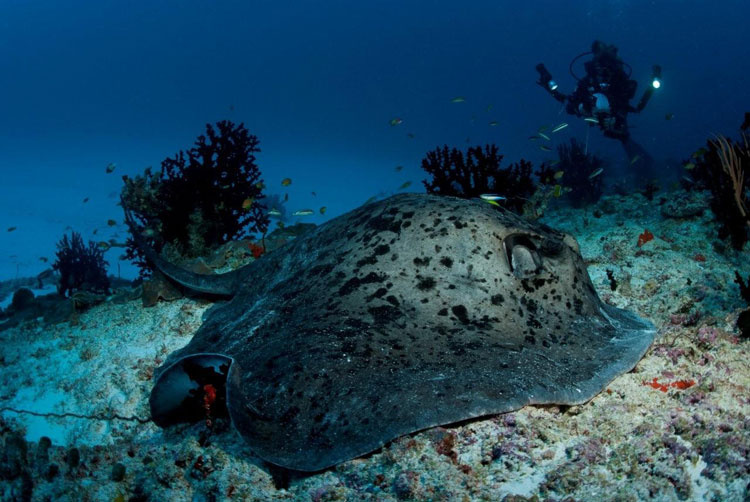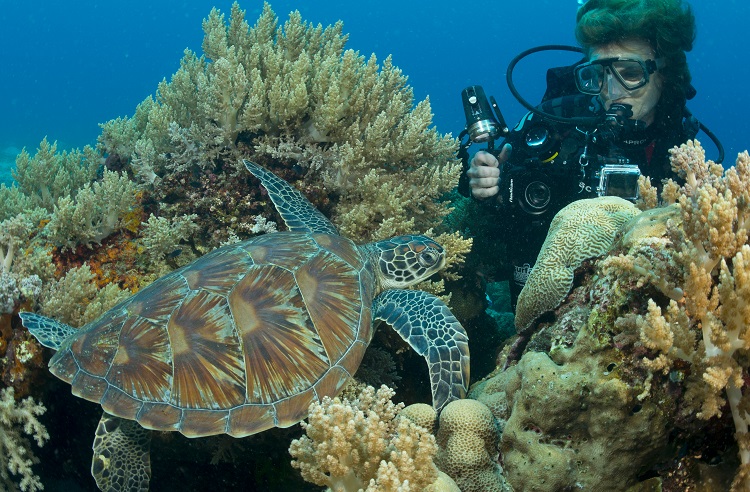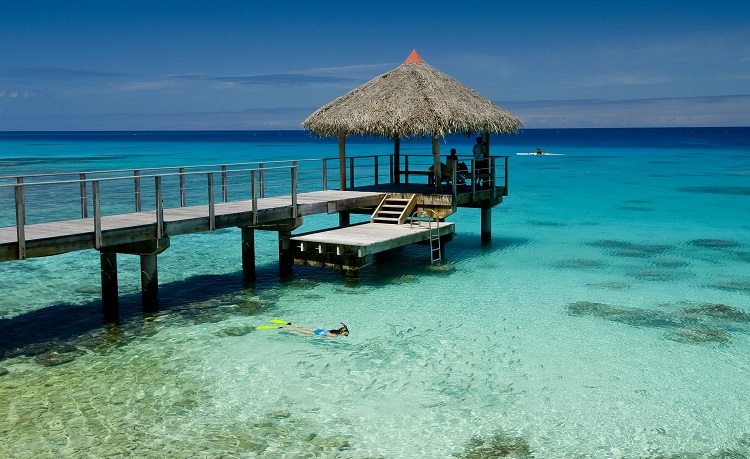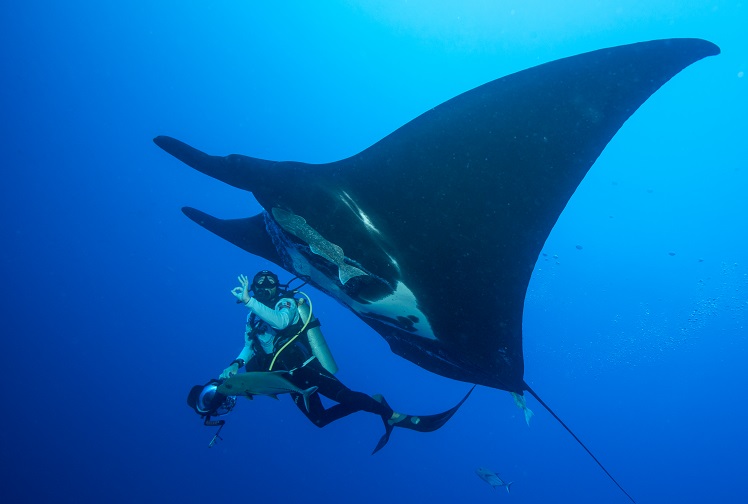Blotched Fantail Ray
11-Jan-2012 Back to Image Gallery
At 35 meters depth hunting for subjects in the Central Maldives, Cherie and I came across this massive Blotched Fantail ray. It was perfectly positioned in a setting of corals and a white sand backdrop. But of most importance, it was in a position that allowed a low approach for me as stingrays get very stressed by an approach from above. There was also comfortable access for a background approach by Cherie, and room for the animal to flee if it became nervous. The most important rule with any big stingrays, or other big animals for that matter, is always make sure you do not corner them. It will result in flight or fight for these animals and other underwater photographers and dive models have come to grief in ignorance of this rule. Moving in very gently, breathing minimised, staying quite low I got within half a meter of the ray and managed some good images without stressing it. Then Cherie and other dive buddies, noting my technique, one by one emulated this technique and all enjoyed a safe encounter.
Photo Data: Location: Maldives, Male Atolls. Genre: Wide Angle. Photo Data: Nikon D200, Nikkor 10.5 lens + 1.4 Teleconvertor, Seacam Housing, Dual Seacam Strobes, Manual Exposure Mode. ISO 100. Exposure f8 @ 1/40th sec. Image by Kevin Deacon.
Photo Hints: I chose a slow shutter speed to allow the low sunlight levels to expose the background. I am always willing to shoot at shutter speeds below 1/60th as long as both photographer and subject are not moving. This is generally preferable to the other options of opening the aperture which sacrifices depth of field, or increasing the ISO which might create noise (grain) in the final image.Equipment Comments: The key equipment element with this image is the use of the Seacam Fisheye Dome. The Seacam Fisheye Dome (unlike most domes) is a perfect half hemisphere optical glass dome that is perfectly matched to the popular 10.5 or 16 MM Full Frame Fisheye lenses. This combination produces images with superior corner to corner, edge to edge sharpness. This is not so important when the corners or far edges of frame are just blue water, but very essential when the key subject or subjects occupy most of the frame. Seacam produce Flat Ports, Domes and Port Extensions to accommodate every possible lens combination aimed at providing optimum optical sharpness at all times.
Interesting Facts: Blotched Fantail rays, Taeniura meyeni, like stingrays, use their serrated barbs only for self defence. Their main predators are sharks and giant groupers which attack from above and are willing to tolerate the barb. They can manoeuvre their tail in any direction so don’t assume you are safe just because you are not approaching from above. Chances are you might have eaten stingray. Their flesh has been marketed for generations under the seafood label of flake, a term used for both shark and ray sold for human consumption. As they are slow breeders this makes them extremely vulnerable to overfishing.



